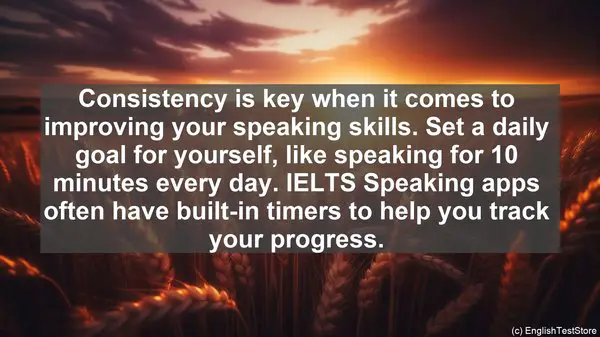Introduction: The Power of Technology in IELTS Speaking
In today’s lesson, we’re going to explore the exciting ways in which technology can transform your IELTS speaking practice. Traditional methods are effective, but with the advancements in technology, we now have a wide array of tools and resources at our disposal. Let’s dive in!
1. Speech Recognition Apps: Your Personal Language Coach
Gone are the days when you needed a human tutor to assess your speaking skills. With speech recognition apps like ‘ABC English’ and ‘IELTS Speaking Assistant,’ you can get instant feedback on your pronunciation, intonation, and fluency. These apps use cutting-edge algorithms to analyze your speech and provide detailed insights for improvement.
2. Virtual Speaking Groups: Practice Anytime, Anywhere
Finding a speaking partner can be a challenge, especially if you’re in a non-English speaking environment. But with virtual speaking groups on platforms like ‘IELTS Speaking Practice’ and ‘HelloTalk,’ you can connect with learners from around the world. These groups often have structured sessions and experienced moderators, ensuring a productive practice environment.
3. YouTube: A Treasure Trove of Speaking Resources
YouTube isn’t just for entertainment. It’s a goldmine of speaking resources. Channels like ‘IELTS Liz’ and ‘IELTS Advantage’ offer expert tips, sample answers, and mock speaking tests. You can even find full-length speaking tests with real candidates, giving you a realistic idea of the exam format and time constraints.

4. Podcasts: Improve Listening and Speaking Simultaneously
Listening and speaking skills go hand in hand. By regularly listening to English podcasts, you not only enhance your comprehension but also pick up on native speakers’ intonation and expressions. Podcasts like ‘IELTS Energy’ and ‘The IELTS Speaking Podcast’ are specifically designed for IELTS learners, covering a wide range of topics.
5. Vocabulary Building Apps: Expand Your Lexicon
A rich vocabulary is crucial for a high band score in IELTS speaking. Apps like ‘Memrise’ and ‘Vocabulary.com’ make learning new words engaging and interactive. With features like flashcards, quizzes, and spaced repetition, these apps ensure that you retain and recall the words effectively.

6. Pronunciation Tools: Fine-tune Your Accent
Accurate pronunciation is key to conveying your message clearly. Apps like ‘Sounds: The Pronunciation App’ and ‘ELSA Speak’ offer interactive exercises and real-time feedback to help you master the nuances of English pronunciation. Some apps even compare your pronunciation with that of native speakers, giving you a benchmark to strive for.
7. Online Tutoring: Personalized Guidance at Your Convenience
While technology can be a great self-study tool, there’s no substitute for personalized guidance. Platforms like ‘Preply’ and ‘Italki’ connect you with experienced IELTS tutors who can tailor their lessons to your specific needs. Whether it’s tackling your weak areas or fine-tuning your exam strategies, a good tutor can make a world of difference.
8. IELTS Speaking Apps: Simulate the Real Exam
To familiarize yourself with the IELTS speaking test format, it’s essential to practice with authentic materials. Apps like ‘IELTS Speaking’ and ‘IELTS Speaking Practice’ provide a range of topics and questions that mirror the actual exam. Some apps even have a timer, allowing you to practice within the strict time limits.
9. Social Media: Learn Informally, Anytime
Social media platforms like Facebook and Instagram aren’t just for socializing. Joining English learning communities and following English pages can expose you to a variety of content, from informal conversations to thought-provoking articles. Engaging with these posts by commenting and discussing can also improve your written communication skills.
10. Language Exchange: Learn from Native Speakers
Language exchange platforms like ‘Tandem’ and ‘HelloLingo’ connect you with native English speakers who are learning your native language. This mutually beneficial arrangement allows you to practice your speaking skills with a fluent speaker while helping them with your language. It’s a win-win situation!














